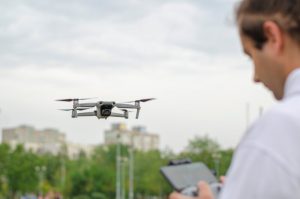Collins Aerospace: Fortifying the Core of Nuclear Deterrence
In June 2025, Collins Aerospace secured a $16.6 million deal to enhance avionics software and cybersecurity for the U.S. Navy’s E-6B Mercury, a vital nuclear command-and-control aircraft. This project emphasizes Collins Aerospace’s critical role in defending the digital “nervous system” of America’s primary airborne deterrent, ensuring secure communications and robust command links remain intact, even amidst the chaos of nuclear conflict.
Understanding the E-6B Mercury
The E-6B Mercury is more than just another military jet. As a flying command post, it is a modified Boeing 707 that serves as the backbone of the United States’ nuclear command, control, and communications (NC3) system. It fulfills two key roles:
- TACAMO (Take Charge and Move Out): It transmits orders from national leadership to ballistic missile submarines, utilizing special very low frequency (VLF) radio waves capable of penetrating deep underwater.
- ABNCP (Airborne Command Post): It acts as a survivable “nerve center” for U.S. Strategic Command, maintaining nuclear command continuity if ground-based stations are compromised or jammed.
Uniquely, the E-6B is the sole aircraft capable of remotely launching U.S. land-based intercontinental ballistic missiles, thanks to its Airborne Launch Control System (ALCS).
The Necessity for Cybersecurity Upgrades
The mission of the E-6B is existential. Its communications must penetrate extreme conditions—atomic blasts, jamming, cyberattacks—ensuring the President’s orders reach forces on land, sea, and air without fail. In today’s digital warfare age, cyber vulnerabilities pose threats as serious as enemy missiles. A successful cyberattack could disastrously disrupt nuclear command and control.
Major Cybersecurity Challenges:
- Aging systems: The E-6B’s legacy avionics, originally crafted during the Cold War, now face modern threats for which they weren’t designed.
- Multi-enclave operations: Sensitive communications must remain strictly separated yet accessible to authorized personnel in real-time.
- Survivability: Systems must endure nuclear explosions, including the electromagnetic pulse (EMP) that can incapacitate most electronics.
Collins Aerospace’s Upgraded Solutions
Collins Aerospace’s current cybersecurity project marks their latest effort in upgrading E-6B systems. Over the past decade, they completed a comprehensive “Block I” upgrade, providing a digital backbone, updated command facilities, multi-enclave data distribution, and durable VLF terminals.
This New Contract Encompasses:
- Avionics software hardening: Protecting flight, navigation, and communications software from unauthorized access and interference.
- Trusted computing integration: Implementing hardware and software solutions to authenticate every user, process, and message, ensuring only verified operations are executed on critical systems.
- Cyber incident response: Rapid threat detection, isolation, and neutralization to minimize downtime and maintain mission continuity.
- Strict testing and validation: Upgrades are being developed and rigorously tested at Collins Aerospace sites in Texas, Oklahoma, and Maryland, aiming for completion by June 2026.
Modernizing for the Digital Battlefield
Collins Aerospace embraces a comprehensive approach with:
- Internet Protocol Bandwidth Expansion (IPBE): A digital foundation supporting high-speed, multi-channel communications, allowing secure transmission of voice, video, and mission data.
- Multi-enclave distribution: Safeguard communications for classified users, preventing accidental leaks and intentional breaches.
- Advanced encryption and authentication: Deploying cutting-edge cryptographic standards to thwart message interception and tampering.
- EMP shielding: Ensuring hardware and software function even after high-altitude nuclear detonations.
- Integrated SATCOM systems: Equipping E-6Bs with satellite connections offering secure Ku and Ka-band channels, providing global reach with strong anti-jamming capabilities.
Leading the Charge: Collins Aerospace’s Expertise
With over 50 years supporting Navy TACAMO operations, Collins Aerospace is revered as both an innovator and a trustworthy partner. Their Mission System Integrator (MSI) role encompasses the entire lifecycle: design, coding, production, installation, qualification, and rapid threat response.
“The Block I contract exemplifies Collins Aerospace’s ability to deliver comprehensive, integrated, and durable solutions to the Navy and E-6B community.”
— Heather Robertson, Vice President & General Manager, Mission Systems, Collins Aerospace
Collins Aerospace’s commitment extends beyond technical proficiency to a profound partnership, meeting the unique challenges of “no-fail” nuclear missions and adapting agilely to evolving threats.
The Human Dimension: Training for Operational Resilience
Technology’s efficacy is reliant on the competency of its operators. Collins Aerospace ensures:
- Crew training: Skillfully preparing E-6B operators to use new cyber tools without being overwhelmed.
- Red team/blue team drills: Simulating live cyberattacks to rigorously test defenses.
The outcome? A continually enhancing “immune system” for the world’s most sensitive flying command post.
Ensuring Command Chain Security
The E-6B is famously referred to as the aircraft that “never sleeps,” ready to fly for days, relaying crucial messages even if satellites falter, ensuring message integrity underpins the security chain, preventing unauthorized orders and errors.
- Minimizing cyber sabotage risks.
- Securing message integrity, avoiding false orders or confusion.
- Supporting legacy and prospective nuclear command and control missions.
The Future of Airborne Nuclear Command and Control
The Collins Aerospace upgrade aligns with a broader effort to modernize all facets of the nuclear triad’s communications. As adversaries enhance cyber warfare and electronic attacks, America’s airborne NC3 fleet employs:
- Modular, upgradable software: Facilitating rapid vulnerability patches without new aircraft dependencies.
- AI integration: Enabling faster anomaly detection and smarter network defense.
- Networked resilience: E-6Bs operate as interconnected units, collaborating with satellites, ground stations, and each other for resilient communication networks.
Conclusion: The Value of These Upgrades
The stakes transcend merely securing a contract or an aircraft—they pertain to deterrence credibility and the protection of millions. Collins Aerospace’s work on the E-6B ensures, in the darkest hour, the United States preserves an unbreakable command chain.
As threats migrate from physical to virtual domains, these solutions are more than vital; they are indispensable.
Fun Fact:
The E-6B Mercury, often dubbed the “Doomsday Plane” by media, symbolizes 21st-century cyber defense as much as Cold War power. It functions as the ultimate “air-gapped” computer worldwide.
Did You Know?
The E-6B’s VLF antennas can trail miles behind the aircraft, resembling the tail of a massive cyber dragon, conveying secrets solely to American submarines.
For more insights, refer to the original MilitaryAerospace.com article and Collins Aerospace’s official publications for in-depth technical exploration.













